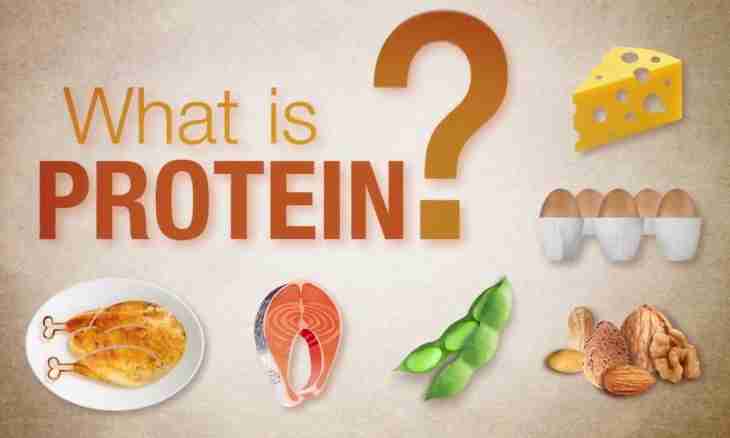Proteins – the most complex and most important substances operating in an organism. They are a basis of cellular protoplasm. In their structure – hydrogen, nitrogen, carbon, oxygen and other elements. The basis of molecules of proteins is formed to 25 various amino acids.
What is proteins
Proteins – a product specific. From each other they differ not only in structure, but also way of compound of amino acids. Each protein has properties characteristic only to it: myosin promotes reduction of muscles, hemoglobin transfers oxygen, some other proteins regulates digestion.
Why the nobility how there is a proteinaceous exchange? To interfere with process and to adjust it, determining the proteinaceous value of food and correctly selecting food. 12 of 25 amino acids - "bricks" of a proteinaceous molecule – irreplaceable. If some is not enough, all exchange falls and synthesis of protein stops.
The most valuable and necessary on amino-acid structure it is possible to call animal protein – meat, fish, eggs, milk and molokoprodukta. They are most usvoyaema (for 80%) and contain irreplaceable amino acids. Vegetable proteins – grain, bean, bread – are not so biologically valuable, from them it is possible to receive the necessary amount of irreplaceable amino acids only at a certain combination
Proteinaceous exchange and nitrogenous balance
So, protein exchange. Amino acids which are soaked up in blood from intestines get into a liver on a vorotny vein. In a liver from their part difficult connections – polypeptides which further blood carries on all organism that they entered connection with other cellular proteins are synthesized, replacing already used amino acids. In the course of disintegration of protein, ammonia and uric acid is formed. The last comes to blood from fabrics after disintegration of complex proteins and is removed with then and urine. All this procedure is aimed only at to sate as much as possible cages with food. The speed of proteinaceous exchange is higher, the more nutrients receive an organism. About intensity of proteinaceous exchange it is possible to judge by nitrogenous balance. If the amount of the entered and emitted nitrogen is identical – nitrogenous balance signals about what everything be all right. If entered more, it is positive nitrogenous balance. Happens at children and the recovering patients. The prevalence of the removed nitrogen says that processes of destruction of protein prevail over education. Such balance needs to be adjusted the increased protein consumption. Proteinaceous insufficiency – the serious disease leading to failure of all systems of an organism including to mental disorders.

